Fatty cells under the skin. Lipoma: Causes, Symptoms, and Treatment Options for Fatty Tissue Growths
What are the common symptoms of lipomas. How are lipomas diagnosed and treated. Can lipomas be prevented or reduced without surgery. What are the different types of lipomas and where do they typically occur. When should you seek medical attention for a lipoma.
Understanding Lipomas: Benign Fatty Tissue Growths
Lipomas are noncancerous growths of fatty tissue that develop slowly beneath the skin. These common lumps are typically harmless and rarely require treatment. While they can appear at any age, lipomas are most prevalent in individuals between 40 and 60 years old. Approximately 1 in 1,000 people will develop a lipoma during their lifetime, making them a relatively common occurrence.
Despite their benign nature, it’s crucial to consult a healthcare professional if you notice any changes in your skin. This is because lipomas can sometimes resemble liposarcomas, a rare form of cancer. Early detection and proper diagnosis are key to ensuring appropriate treatment and peace of mind.
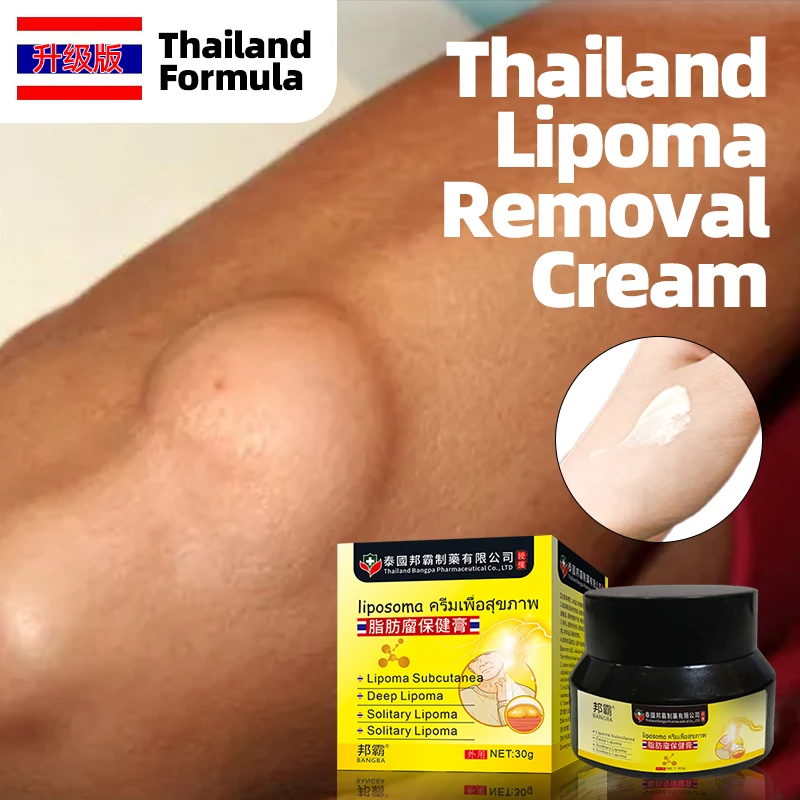
Causes and Risk Factors of Lipoma Formation
The exact cause of lipomas remains largely unknown. However, several factors may contribute to their development:
- Genetic predisposition: About 2-3% of individuals with lipomas have a family history of the condition.
- Previous injuries: Some research suggests that lipomas may form in areas where significant impact injuries have occurred.
- Certain medical conditions: Disorders such as adiposis dolorosa (Dercum’s disease), Cowden syndrome, and Gardner’s syndrome may increase the risk of lipoma development.
While these factors may play a role, it’s important to note that many lipomas occur without any apparent cause. Understanding the potential risk factors can help individuals be more vigilant about changes in their skin and seek medical attention when necessary.
Identifying Lipoma Symptoms and Characteristics
Recognizing the typical features of a lipoma can help you distinguish it from other skin growths. Generally, a lipoma will:
- Feel soft and doughy to the touch
- Move easily when gently pressed
- Be located just beneath the skin’s surface
- Appear colorless or match the surrounding skin tone
- Grow slowly over time
- Range in size from a pea to several centimeters in diameter
Are lipomas painful? In most cases, lipomas are painless. However, they may cause discomfort if they press on nearby nerves or contain many blood vessels. If you experience pain or rapid growth in a suspected lipoma, it’s essential to consult a healthcare provider for further evaluation.

Types of Lipomas: Beyond the Conventional
While conventional lipomas are the most common, several other types exist. These variations are distinguished by their appearance under a microscope and may have slightly different characteristics:
- Conventional lipoma: The most frequently encountered type, composed of mature white fat cells.
- Atypical lipoma: Contains deeper fat tissue and a higher number of cells.
- Hibernoma: Composed of brown fat instead of white fat.
- Myelolipoma: Contains fat tissue that produces white blood cells.
- Spindle cell lipoma: Features fat cells with a distinctive spindle-like appearance.
- Pleomorphic lipoma: Contains fat cells of varying sizes and shapes.
- Fibrolipoma: A combination of fat and fibrous tissue.
- Angiolipoma: Contains a large number of blood vessels in addition to fat tissue.
Understanding these variations can help healthcare providers determine the most appropriate treatment approach and ensure accurate diagnosis.
Common Locations for Lipoma Growth
Lipomas can develop virtually anywhere on the body where fat tissue is present. However, certain areas are more prone to lipoma formation than others. The most common locations include:

- Neck
- Shoulders
- Arms
- Thighs
- Back
- Abdomen
Can lipomas grow in internal organs? While rare, lipomas can occasionally develop in internal organs such as the heart, lungs, or gastrointestinal tract. These cases typically require specialized medical attention and may be discovered incidentally during imaging studies for unrelated conditions.
Diagnosis and Medical Evaluation of Lipomas
Accurate diagnosis of a lipoma is crucial to rule out more serious conditions. The diagnostic process typically involves:
- Physical examination: A healthcare provider will visually inspect and palpate the growth to assess its characteristics.
- Medical history: Your doctor will inquire about your symptoms, how long you’ve had the growth, and any family history of similar conditions.
- Biopsy: In some cases, a small tissue sample may be taken for laboratory analysis to confirm the diagnosis and rule out malignancy.
- Imaging studies: MRI or CT scans may be ordered if there’s suspicion of a more complex growth or to evaluate the extent of the lipoma.
How can you differentiate between a lipoma and a more serious growth? While lipomas are generally soft and movable, any rapid growth, pain, or hardening of the lump should prompt immediate medical evaluation. Additionally, if the growth is larger than 5 cm in diameter or located in a concerning area, further investigation may be necessary.

Treatment Options for Lipomas: From Observation to Surgery
The treatment of lipomas depends on various factors, including size, location, and associated symptoms. Options include:
- Observation: Small, asymptomatic lipomas may not require treatment and can be monitored over time.
- Steroid injections: These can help shrink the lipoma but do not completely remove it.
- Surgical excision: The most definitive treatment, involving the complete removal of the lipoma under local anesthesia.
- Liposuction: Can reduce the size of larger lipomas but may not remove them entirely.
What factors influence the choice of treatment? The decision to treat a lipoma and the method chosen depends on:
- The size and growth rate of the lipoma
- Whether it causes pain or discomfort
- Its location on the body
- The patient’s personal preferences and concerns
Surgical Removal of Lipomas
Surgical excision is the most common and effective treatment for lipomas. The procedure typically involves:
- Administration of local anesthesia to numb the area
- Making an incision in the skin over the lipoma
- Carefully removing the entire lipoma
- Closing the incision with sutures
Is lipoma removal surgery painful? The procedure itself is usually painless due to the local anesthesia. Some patients may experience mild discomfort or soreness for a few days following the surgery, which can typically be managed with over-the-counter pain relievers.
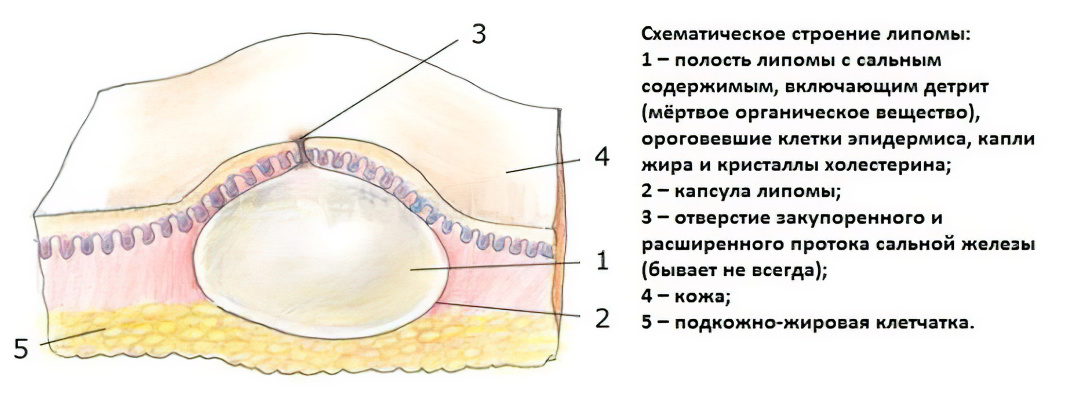
Cost Considerations for Lipoma Treatment
The cost of lipoma removal can vary widely depending on several factors:
- Size and location of the lipoma
- Complexity of the procedure
- Whether it’s performed in an office setting or requires an operating room
- Type of anesthesia used
- Geographic location and healthcare provider fees
On average, lipoma removal in an office setting under local anesthesia can cost between $500 and $2,000. However, more complex cases requiring general anesthesia or an operating room setting may be significantly more expensive.
Does insurance cover lipoma removal? Many insurance plans cover lipoma removal if it’s deemed medically necessary. However, coverage can vary, and some plans may consider the procedure cosmetic. It’s essential to check with your insurance provider to understand your coverage and potential out-of-pocket costs.
Living with Lipomas: Management and Prevention
While lipomas cannot always be prevented, there are steps you can take to manage them and potentially reduce their impact on your life:
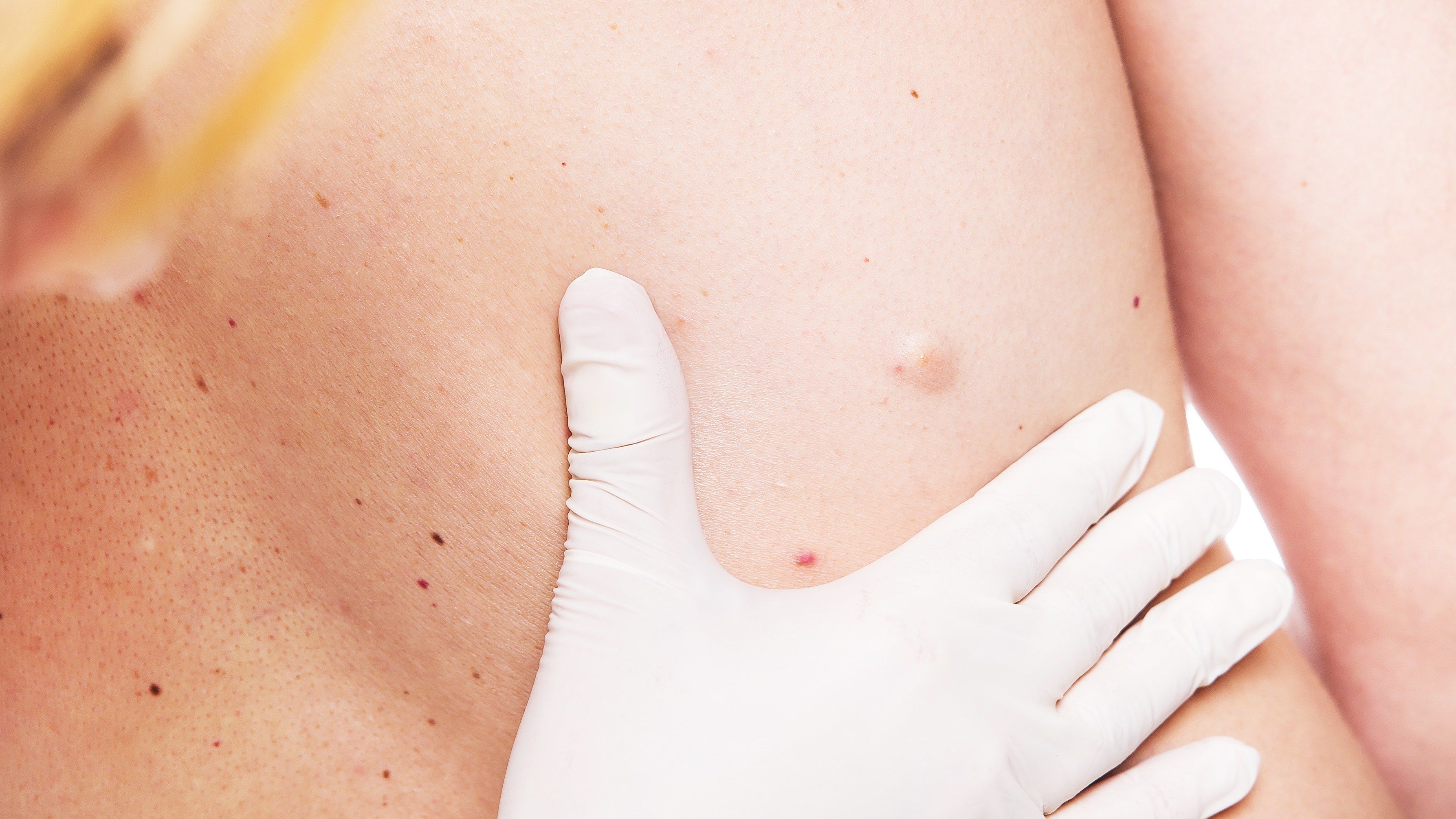
- Regular self-examinations: Monitor your skin for any new growths or changes in existing ones.
- Maintain a healthy lifestyle: While not directly linked to lipoma prevention, a balanced diet and regular exercise promote overall skin health.
- Avoid trauma to the skin: Since some lipomas may develop after injury, protecting your skin from significant impacts could potentially reduce risk.
- Seek prompt medical attention: If you notice any concerning changes in a lipoma or develop new growths, consult a healthcare provider.
Can lipomas be reduced naturally? While some natural remedies are touted for lipoma reduction, there is limited scientific evidence to support their effectiveness. These may include:
- Applying apple cider vinegar or tea tree oil to the lipoma
- Increasing omega-3 fatty acid intake through diet or supplements
- Using herbal preparations such as turmeric or flaxseed oil
It’s important to note that these methods are not proven and should not replace professional medical advice or treatment.

When to Seek Medical Attention
While lipomas are generally harmless, certain situations warrant prompt medical evaluation:
- Rapid growth of the lipoma
- Pain or tenderness in the area
- Changes in skin color or texture over the lipoma
- Development of multiple lipomas
- Lipoma interfering with movement or daily activities
Early detection and proper diagnosis are crucial in distinguishing benign lipomas from more serious conditions, ensuring peace of mind and appropriate treatment when necessary.
What It Is, Causes, Symptoms, Types, Treatment
Lipomas are common, noncancerous, fatty tissue growths under the skin. They rarely require treatment, as they are benign and not harmful.
Lipomas are noncancerous, fatty tissue growths that slowly develop under your skin. They are rarely harmful and typically do not require treatment, according to the National Health Service (NHS).
People of any age can develop a lipoma, but you are most likely to see this skin growth if you‘re between ages 40 and 60, according to the American Academy of Orthopaedic Surgeons.
Lipomas are very common. In fact, around 1 in every 1,000 people will develop a lipoma in their lifetime.
They’re classified as benign growths, or tumors, of fatty tissue. This means a lipoma is not cancerous and is rarely harmful.
You should call a healthcare professional if you notice any changes in your skin. A lipoma can look very similar to a liposarcoma, a rare cancer.
The cause of lipomas is largely unknown.
There may be a genetic cause in people with multiple lipomas. Around 2 to 3 percent of people who develop a lipoma have a family history of the condition.
Some research suggests that lipomas may develop in an area where an injury has caused a significant impact.
A lipoma will generally:
- feel soft to the touch
- move easily if prodded with your finger
- be just under the skin
- be colorless
- grow slowly
There are various types of lipomas. Doctors distinguish the types of lipomas by how tissue appears under a microscope.
Types of lipomas include:
- Conventional lipoma. This is the most common form of lipoma.
- Atypical lipoma. These tumors contain deeper fat and a larger number of cells.
- Hibernoma. This growth contains brown fat instead of the mature white fat that’s in a conventional lipoma.
- Myelolipoma. The fat tissue in a myelolipoma produces white blood cells, unlike in conventional lipomas.

- Spindle cell lipoma. As the name suggests, the fat cells in this growth appear spindle-like.
- Pleomorphic lipoma. This form of lipoma contains fat cells of varying sizes and shapes.
- Fibrolipoma. A fibrolipoma contains both fat and fibrous tissue.
- Angiolipoma. If your lipoma contains a large number of blood vessels as well as fat, it is an angiolipoma.
Where can lipoma grow?
A lipoma can form on any part of the body, but they typically appear on the:
- neck
- shoulders
- arms
- thighs
Typically, a lipoma will not cause any adverse health problems. However, a dermatologist can treat the lump if it bothers you. They will make a treatment recommendation based on a variety of factors, including:
- the size of the lipoma
- the number of skin tumors you have
- whether the lipoma is painful
Steroid injections
Steroid injections may also be used directly on the affected area. This treatment can shrink the lipoma, but it does not completely remove it.
This treatment can shrink the lipoma, but it does not completely remove it.
Healthcare professionals can often diagnose a lipoma by performing a physical exam.
In some cases, your dermatologist might take a biopsy of the lipoma. During this procedure, they’ll take a small sample of tissue and send it to a lab for testing.
Medical professionals carry out this test to rule out the possibility of cancer. Although a lipoma is not cancerous, it can rarely mimic a liposarcoma, which is malignant (cancerous).
Further testing using MRI and CT scans may only be required if a biopsy shows that a suspected lipoma is a liposarcoma.
Lipomas may vary in shape and size. Lipomas on different body parts may also appear different. Below are images of varying lipomas.
The most common way to treat a lipoma is to remove it through surgery. This is especially helpful if you have a large skin tumor that’s still growing.
Your doctor will typically carry out an excision procedure with you under a local anesthetic. They will make an incision in your skin to remove the lipoma. Once they remove the growth, they will sew up the incision.
They will make an incision in your skin to remove the lipoma. Once they remove the growth, they will sew up the incision.
Liposuction is another treatment option. Since lipomas are fat-based, this procedure can reduce their size.
However, to prevent it from coming back, it is important that the doctor removes a lipoma in its entirety. This is not as effective or guaranteed with liposuction. In addition, a lipoma (or a part of it) may be under the muscle, which liposuction cannot reach.
If you have insurance, you should check with your insurance provider to see if your plan covers lipoma removal.
The cost of lipoma removal can vary depending on the:
- size of the growth
- location of the growth
- complexity of the procedure
Most lipomas are small and can be removed under local anesthesia in an office setting. These procedures can cost anywhere from $500 to $2,000.
However, the cost may be higher if your situation requires an operating room and general anesthesia.
Certain conditions may also increase your risk of lipoma development. These include:
- adiposis dolorosa, or Dercum’s disease (a rare disorder characterized by multiple, painful lipomas)
- Cowden syndrome
- Gardner’s syndrome (infrequently)
- Madelung’s disease
- Bannayan-Riley-Ruvalcaba syndrome
In addition to these risk factors, the following conditions may also lead to the development of lipomas:
- obesity
- alcohol use disorder
- liver disease
- glucose intolerance
Lipomas are noncancerous fatty growths that typically pose little immediate health risk. Medical professionals can remove these growths through surgery, although this will typically be for cosmetic benefit.
Lipomas are benign tumors. This means that there’s no chance that an existing lipoma will spread throughout the body. The condition will not spread through muscles or any other surrounding tissues, and it is not life threatening.
However, your doctor may still monitor your lipoma to track its development.
You cannot reduce the size of a lipoma with self-care. Warm compresses may work for other skin lumps, but they are not helpful for lipomas, as they are a collection of fat cells.
See a healthcare professional for treatment if you have any concerns about getting rid of a lipoma.
What It Is, Causes, Symptoms, Types, Treatment
Lipomas are common, noncancerous, fatty tissue growths under the skin. They rarely require treatment, as they are benign and not harmful.
Lipomas are noncancerous, fatty tissue growths that slowly develop under your skin. They are rarely harmful and typically do not require treatment, according to the National Health Service (NHS).
People of any age can develop a lipoma, but you are most likely to see this skin growth if you‘re between ages 40 and 60, according to the American Academy of Orthopaedic Surgeons.
Lipomas are very common. In fact, around 1 in every 1,000 people will develop a lipoma in their lifetime.
They’re classified as benign growths, or tumors, of fatty tissue. This means a lipoma is not cancerous and is rarely harmful.
You should call a healthcare professional if you notice any changes in your skin. A lipoma can look very similar to a liposarcoma, a rare cancer.
The cause of lipomas is largely unknown.
There may be a genetic cause in people with multiple lipomas. Around 2 to 3 percent of people who develop a lipoma have a family history of the condition.
Some research suggests that lipomas may develop in an area where an injury has caused a significant impact.
A lipoma will generally:
- feel soft to the touch
- move easily if prodded with your finger
- be just under the skin
- be colorless
- grow slowly
There are various types of lipomas. Doctors distinguish the types of lipomas by how tissue appears under a microscope.
Types of lipomas include:
- Conventional lipoma. This is the most common form of lipoma.

- Atypical lipoma. These tumors contain deeper fat and a larger number of cells.
- Hibernoma. This growth contains brown fat instead of the mature white fat that’s in a conventional lipoma.
- Myelolipoma. The fat tissue in a myelolipoma produces white blood cells, unlike in conventional lipomas.
- Spindle cell lipoma. As the name suggests, the fat cells in this growth appear spindle-like.
- Pleomorphic lipoma. This form of lipoma contains fat cells of varying sizes and shapes.
- Fibrolipoma. A fibrolipoma contains both fat and fibrous tissue.
- Angiolipoma. If your lipoma contains a large number of blood vessels as well as fat, it is an angiolipoma.
Where can lipoma grow?
A lipoma can form on any part of the body, but they typically appear on the:
- neck
- shoulders
- arms
- thighs
Typically, a lipoma will not cause any adverse health problems. However, a dermatologist can treat the lump if it bothers you. They will make a treatment recommendation based on a variety of factors, including:
However, a dermatologist can treat the lump if it bothers you. They will make a treatment recommendation based on a variety of factors, including:
- the size of the lipoma
- the number of skin tumors you have
- whether the lipoma is painful
Steroid injections
Steroid injections may also be used directly on the affected area. This treatment can shrink the lipoma, but it does not completely remove it.
Healthcare professionals can often diagnose a lipoma by performing a physical exam.
In some cases, your dermatologist might take a biopsy of the lipoma. During this procedure, they’ll take a small sample of tissue and send it to a lab for testing.
Medical professionals carry out this test to rule out the possibility of cancer. Although a lipoma is not cancerous, it can rarely mimic a liposarcoma, which is malignant (cancerous).
Further testing using MRI and CT scans may only be required if a biopsy shows that a suspected lipoma is a liposarcoma.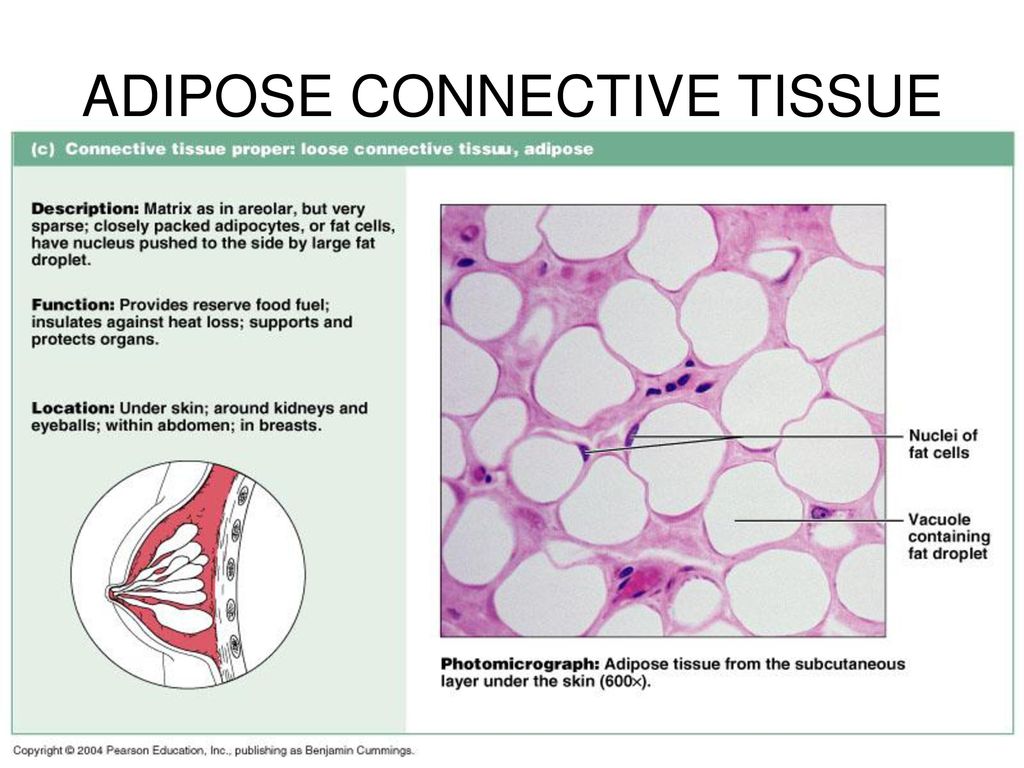
Lipomas may vary in shape and size. Lipomas on different body parts may also appear different. Below are images of varying lipomas.
The most common way to treat a lipoma is to remove it through surgery. This is especially helpful if you have a large skin tumor that’s still growing.
Your doctor will typically carry out an excision procedure with you under a local anesthetic. They will make an incision in your skin to remove the lipoma. Once they remove the growth, they will sew up the incision.
Liposuction is another treatment option. Since lipomas are fat-based, this procedure can reduce their size.
However, to prevent it from coming back, it is important that the doctor removes a lipoma in its entirety. This is not as effective or guaranteed with liposuction. In addition, a lipoma (or a part of it) may be under the muscle, which liposuction cannot reach.
If you have insurance, you should check with your insurance provider to see if your plan covers lipoma removal.
The cost of lipoma removal can vary depending on the:
- size of the growth
- location of the growth
- complexity of the procedure
Most lipomas are small and can be removed under local anesthesia in an office setting. These procedures can cost anywhere from $500 to $2,000.
However, the cost may be higher if your situation requires an operating room and general anesthesia.
Certain conditions may also increase your risk of lipoma development. These include:
- adiposis dolorosa, or Dercum’s disease (a rare disorder characterized by multiple, painful lipomas)
- Cowden syndrome
- Gardner’s syndrome (infrequently)
- Madelung’s disease
- Bannayan-Riley-Ruvalcaba syndrome
In addition to these risk factors, the following conditions may also lead to the development of lipomas:
- obesity
- alcohol use disorder
- liver disease
- glucose intolerance
Lipomas are noncancerous fatty growths that typically pose little immediate health risk. Medical professionals can remove these growths through surgery, although this will typically be for cosmetic benefit.
Medical professionals can remove these growths through surgery, although this will typically be for cosmetic benefit.
Lipomas are benign tumors. This means that there’s no chance that an existing lipoma will spread throughout the body. The condition will not spread through muscles or any other surrounding tissues, and it is not life threatening.
However, your doctor may still monitor your lipoma to track its development.
You cannot reduce the size of a lipoma with self-care. Warm compresses may work for other skin lumps, but they are not helpful for lipomas, as they are a collection of fat cells.
See a healthcare professional for treatment if you have any concerns about getting rid of a lipoma.
features, cells, what body fat is responsible for
Features of adipose tissue
What do we know about fat? Well, probably, the fact that he cunningly tries to cover the whole body, especially the so-called “problem areas”, that the struggle with him is exhausting and often hopeless. What is worth at the cost of incredible efforts to lose those extra pounds, as they immediately strive to return, and even more.
What is worth at the cost of incredible efforts to lose those extra pounds, as they immediately strive to return, and even more.
Why are efforts often fruitless? To answer this question, it is necessary to understand how adipose tissue is arranged, what role it plays in the body, and whether it is really necessary to try to destroy it. Knowledge of the laws of formation and development of adipose tissue is necessary for everyone who is seriously involved in the problems of weight and figure correction.
You may be interested:
BODY CORRECTION: methods of hardware cosmetology – E-book
Correspondence training “FIGURE CORRECTION” with a certificate
5000
Warming thermal gel for body wraps LIPO THERMO CELL, 500 ml
1510
In stock
Gel for body wraps lipolytic LIPO SLIM SCULPTOR, 500 ml
1630
In stock
Gel for body wraps DETOX & DRAINAGE MESOMATRIX, 500 ml
1510
In stock
Set Hardware BODY CORRECTION – everything for myostimulation, RF and cavitation
7608
In stock
SPA-set EXPRESS SCULPTOR for body wraps and body shaping
5236
In stock
There is a fundamental difference between the treatment of obesity as a disease that causes significant harm to health, which is carried out by medical specialists, and the correction of shortcomings in appearance.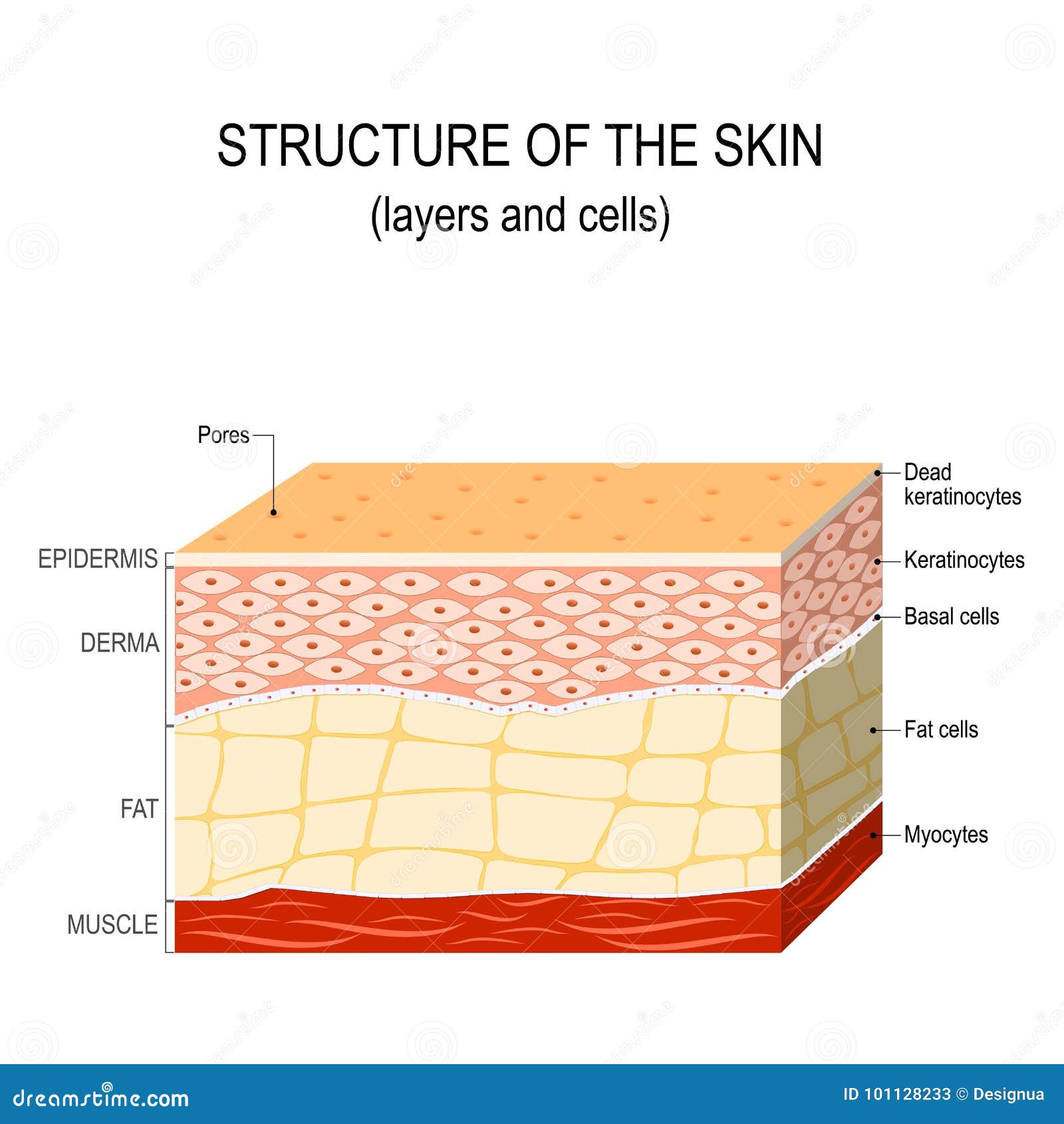 If a woman does not like her figure, because “it hangs too much here, but it sticks out here,” then no doctor will consider this a disease. Medically speaking, the patient is healthy. But has anyone calculated how much suffering women cause unaesthetic tubercles, sagging lumps of fat and other “decorations”. In this case, a cosmetologist is the only specialist who can help. He will be able to choose an individual program that will eliminate both cosmetic imperfections and help heal tissues – muscles, fatty tissue, skin.
If a woman does not like her figure, because “it hangs too much here, but it sticks out here,” then no doctor will consider this a disease. Medically speaking, the patient is healthy. But has anyone calculated how much suffering women cause unaesthetic tubercles, sagging lumps of fat and other “decorations”. In this case, a cosmetologist is the only specialist who can help. He will be able to choose an individual program that will eliminate both cosmetic imperfections and help heal tissues – muscles, fatty tissue, skin.
Why does the body need fat?
Fat enters the body with food. And also carbohydrates and proteins can be turned into fat if they come in an amount that exceeds the needs of the body at the moment. That is, almost any food (!) Can become fat, if you do not fully consume the incoming energy.
In connection with increased advertising, ordinary consumers have an opinion that fat is generally bad, always and everywhere: in milk, yoghurts, and especially in fat folds. In fact, this is not entirely true, and fat performs many irreplaceable functions in the body. Some jokingly refer to their deposits as “strategic reserves”.
In fact, this is not entirely true, and fat performs many irreplaceable functions in the body. Some jokingly refer to their deposits as “strategic reserves”.
If you overindulge in food, the deposited fat turns from a “rainy day stock” into a “waste dump.” And with the appearance of cellulite, it is almost impossible to achieve the breakdown of fats by simple methods – food restrictions, increased physical activity. The deposition of fats in principle is much easier than splitting, even with cellulite.
What are fats responsible for in the body?
Fat is used for the following purposes:
- manufacture of hormones;
- formation of nervous tissue;
- creation of cell membranes;
- construction of skin and other organs;
- participation in biochemical reactions – for example, the assimilation of fat-soluble vitamins A, E, K and D.
From the above, it clearly follows that the problem of overweight in women after 40 years of age should be approached with the utmost caution. Adipose tissue is able to synthesize female sex hormones (the so-called extragonadal synthesis). This feature is only in primates – humans and monkeys. An additional source of hormones can soften the course of menopause, reduce calcium leaching from bones, and reduce the risk of cancer.
Adipose tissue is able to synthesize female sex hormones (the so-called extragonadal synthesis). This feature is only in primates – humans and monkeys. An additional source of hormones can soften the course of menopause, reduce calcium leaching from bones, and reduce the risk of cancer.
Korolkova T.N., Poliychuk T.P. Department of Medical Cosmetology of the St. Petersburg Medical Academy of Postgraduate Education. Collection of articles of the Scientific and Practical Society of Cosmetologists of St. Petersburg, issue 3.
“Adipose tissue is an element of the reproductive system of the body. For men of all ages, as well as girls before puberty (puberty – B.N.) and older women, this is the most important source of female sex hormones.”
Nature has been polishing the mechanisms of adaptation for many millions of years, and the fashion for harmony should not overshadow common sense and harm health.
What are the types of fat?
In all mammals, adipose tissue is represented by two types: white and brown.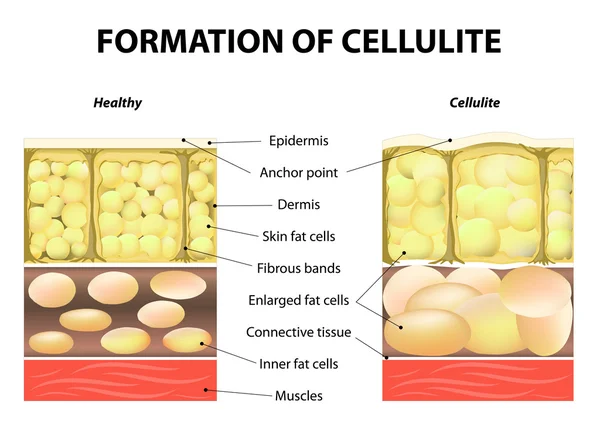 For us, first of all, white adipose tissue is of interest.
For us, first of all, white adipose tissue is of interest.
Functions of white adipose tissue
- Thermal insulation.
- Mechanical protection (impact dampening).
- Accumulation of energy in the form of fat.
As the main source of energy, the body uses carbohydrates, but cannot create a significant supply of them. When the body has used up all the carbohydrates that came with food, it begins to break down glycogen, which is located in the muscles and liver. Thus, it receives the necessary glucose – a source of energy. But with increased consumption, glycogen stores quickly run out. Then the body begins to spend fats, splitting them into glucose. - Production of a whole range of regulatory substances. In particular, adipose tissue is able to synthesize estrogen – female sex hormones. This function of adipose tissue is especially important during menopause.
- Some toxic substances (pesticides and other poisons contained in food and water) are retained in adipose tissue.

It is believed that cellulite is a way to protect the internal organs from the end and not very useful metabolic products. Thus, when we remove waste products from adipose tissue during the treatment of cellulite, we not only improve the figure, but also significantly heal the internal environment of the body.
Brown adipose tissue is located between the shoulder blades, near the kidneys and thyroid gland. There is a lot of brown adipose tissue in a child in the womb. After birth, its number decreases significantly. The main function of brown adipose tissue is to maintain body temperature, although its functions are currently not fully understood.
What cells does adipose tissue consist of?
Adipose tissue consists of fat cells – adipocytes , located in groups in loose connective tissue. (“Adipo” (Latin) and “lipo” (Greek) means fat). The adipocyte consists of one large drop of fat, pushing the nucleus and other organs of the cell to the periphery.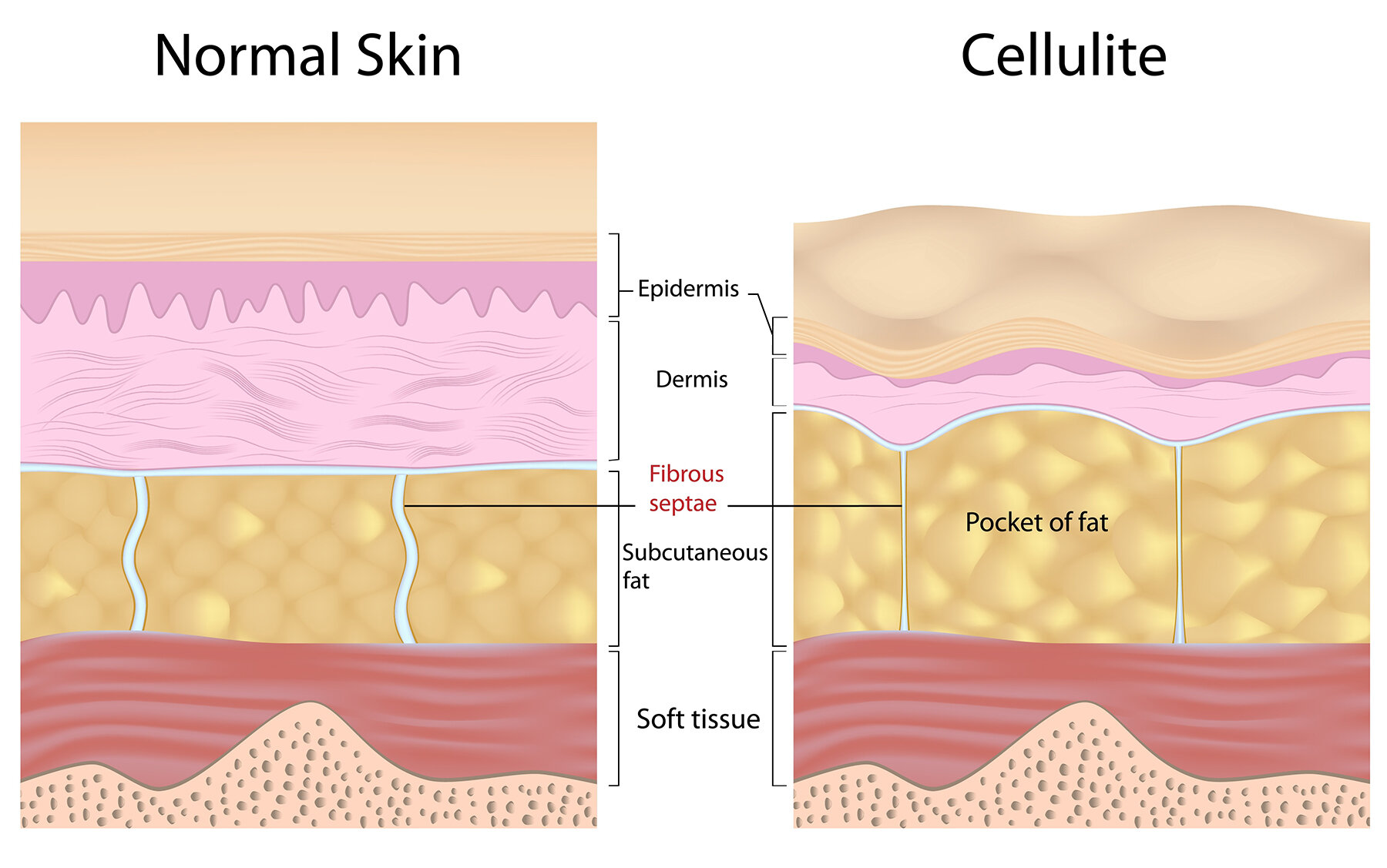
The amount of fat in white adipose tissue can reach up to 85%. An unpleasant property of adipocytes is their ability to rapidly increase in volume. Their diameter can increase by 27-40 times (!).
In addition to adipocytes, adipose tissue contains cells – precursors of fat – preadipocytes. It has long been believed that the number of adipocytes does not change after puberty. Indeed, a mature adipocyte loses its ability to reproduce. But, unfortunately, the so-called preadipocytes are able to turn into adipocytes. (Currently, these cells are not well understood.) Thus, at any age, an increase in the number of fat cells is possible at malnutrition or hormonal metabolism disorders .
There are not many vessels in adipose tissue, but every healthy fat cell is in contact with at least one capillary. Thus, various substances enter the cell and decay products are removed. With obesity and cellulite, not every cell is associated with a capillary, which leads to slagging of adipose tissue with metabolic products.
What determines the amount of adipose tissue?
The volume of adipose tissue depends on the number and size of adipocytes – fat cells. Distinguish between hyperplasia and hypertrophy of fat cells.
Hypertrophy – an increase in the size of each fat cell.
Hyperplasia – an increase in the number of fat cells due to active and multiplication.
There are only two periods in a person’s life when the number of adipocytes actively increases.
The first such period is from the last three months of intrauterine development and up to 18 months of life. If a mother during this period overeated or fed her beloved child by any means, then a predisposition to fullness is created – a large number of fat cells. After all, the number of adipocytes practically does not change during life! All of them, at the opportunity, will strive to fill their vacuoles, that is, to increase as much as possible in volume.
The second period of increase in the number of fat cells falls on adolescence, when a person becomes beautiful in an adult way, and beauty, as you know, is “nothing more than a successful distribution of subcutaneous fat.” Overfeeding of adolescents during this period is very significant for the further state of adipose tissue.
With normal (alimentary, that is, from overeating) obesity, the total number of fat cells can also increase. This phase is only activated when the person’s weight exceeds 100% of their normal weight. Such obesity is no longer amenable to correction with the help of diets and physical activity and indicates serious endocrine and cerebral disorders.
About the features of adipose tissue, about cellulite and methods of its treatment – in the book by N. Bahovets “Figure correction: modern hardware cosmetology”.
Rate the material:
Average rating: 4.8 / 5
Natalia Bahovets
Author of the article: Ph. D. THEM. Mechnikova, author of numerous books and manuals on hardware cosmetology,
D. THEM. Mechnikova, author of numerous books and manuals on hardware cosmetology,
head and methodologist of the AYNA training center.
Skin aging: is adipose tissue a new target?
Until recently, adipocytes (adipose tissue cells) were thought to be simply reservoirs of energy stored as lipids. A deeper understanding of the biology of adipocytes has revealed multiple roles in food intake, diabetes, glucose tolerance, and overall metabolism. The researchers also found that they are directly related to the health and youthfulness of the skin.
Types of adipose tissue
Adipose tissue is no longer viewed as a mere store of fat for the regulation of energy homeostasis. It is currently thought to be a self-sustaining organ that secretes molecules or adipokines, which in turn can influence the biology of other organs and tissues, including the skin.
Adipose tissue is divided by color and anatomical location. White adipose tissue, which is the energy store for the body, is most abundant in the human body, while brown adipose tissue plays a thermoregulatory role, it is particularly present in newborns and is gradually reabsorbed with age. Beige Adipose Tissue, a mixture of the previous two, was recently discovered and is now a new target in the cosmetics and health market.
Beige Adipose Tissue, a mixture of the previous two, was recently discovered and is now a new target in the cosmetics and health market.
White adipose tissue is also divided into two types of fat: abdominal visceral fat and subcutaneous fat.
Free Anti-Aging Medicine Webinars
Learn about the features of the International School of Anti-Age Expert, as well as opportunities to improve your medical practice day by day. Also in the webinar program are fascinating reviews of innovations in anti-aging medicine and analyzes of the most difficult clinical cases with recommendations that really work.
Learn more
Features of white adipose tissue
White adipose tissue plays a central role in human homeostasis by influencing energy storage, adipokines secretion, and inflammation. During aging, it quantitatively and qualitatively changes and can participate in the occurrence of age-related pathologies.
Progressive loss of subcutaneous adipose tissue mass and its targeted localization in the visceral fat depot, associated with changes in the secretory and cellular profile of adipose tissue, as well as the accumulation of ectopic lipids, is often associated with age-related diseases, such as neurodegenerative changes, loss of mobility, diabetes, cardiovascular dysfunction and so on.
Moreover, adipose tissue is involved in the phenomenon of inflammation, which leads to systemic chronic inflammation of moderate severity, which is a common feature of all pathologies of aging. Thus, understanding the modifications of white adipose tissue during aging offers promising opportunities for improving the quality of life.
Adipose tissue, adipocytes and skin aging
Today, in the context of skin aging, biological researchers continue to study the role of white adipose tissue, and especially the role of the subcutaneous tissue attached to the dermis.
Skin aging is mainly characterized by the gradual appearance of wrinkles, thinning of the skin, and loss of firmness and elasticity. Skin aging is accelerated by the accumulation of exogenous factors such as stress, tobacco, or exposure to pollution and UV rays.
Curiously, white adipose tissue is a favorite place to store contaminants. Several studies have shown that persistent organic pollutants, which are hydrophilic and resistant to degradation, accumulate in adipose tissue within the lipid droplets of adipocytes (adipose tissue cells).
Although white adipose tissue plays a protective role by reducing the severe toxic effects of pollutants on the rest of the human body, this accumulation is a source of chronic exposure and can adversely affect biological and metabolic functions.
Thus, any change in fat storage, such as weight loss, can lead to systemic release of pollutants and cause metabolic complications and skin changes. It is known that persistent organic pollutants have pro-inflammatory, prolipogenic and lipotoxic effects.
They are also known for their negative effects on human health, such as dermal toxicity, immunotoxicity, neurotoxicity, reproductive disorders, teratogenicity, endocrine disruption, and cancer predisposition.
Brief conclusions
Researchers have found that adipocytes (adipose tissue cells) are directly related to the health and youthfulness of the skin.
It is currently believed that adipose tissue is a self-sufficient organ that affects the biology of other organs and tissues, including the skin.





